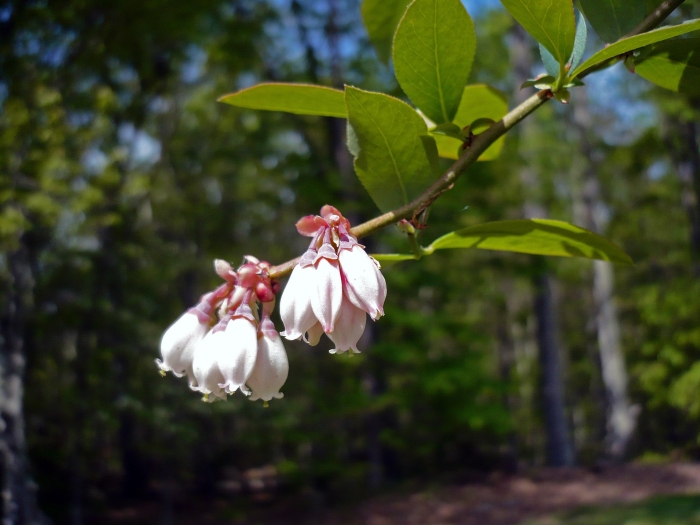Rabbiteye Blueberry
(Vaccinium virgatum)
Rabbiteye Blueberry (Vaccinium virgatum)
/
/

Sabrina Setaro
CC BY 2.0


































Estimated Native Range
Summary
Rabbiteye Blueberry is valued for its ornamental qualities, including its bright orange or red fall foliage. It is commonly used in gardens for its attractive flowers and fruit, and as a naturalizing element in landscapes. This plant thrives in acidic soils and requires cross-pollination with another Rabbiteye Blueberry variety for optimal fruit production. Mulching helps the plant withstand low temperatures down to 10 degrees Fahrenheit. While generally low-maintenance, it is important to protect the fruit from birds and squirrels. Cultivation requires full sun to part shade, medium water, and well-drained soils.CC BY-SA 4.0
Plant Description
- Plant Type: Shrub
- Height: 3-6 feet
- Width: 3-10 feet
- Growth Rate: Moderate
- Flower Color: Pink, White
- Flowering Season: Spring
- Leaf Retention: Deciduous
Growth Requirements
- Sun: Full Sun, Part Shade
- Water: Medium
- Drainage: Slow, Medium
Common Uses
Bee Garden, Bird Garden, Border Plant, Butterfly Garden, Drought Tolerant, Edible*Disclaimer: Easyscape's listed plant edibility is for informational use. Always verify the safety and proper identification of any plant before consumption., Fire Resistant, Groundcover, Hummingbird Garden, Salt Tolerant, Street Planting
Natural Habitat
Pine barrens, open woodlands, and forest edges
Other Names
Common Names: Southern Black Blueberry, Swamp Blueberry, Rabbit-Eye Blueberry
Scientific Names: , Vaccinium virgatum, Vaccinium amoenum, Vaccinium corymbosum var. amoenum, Vaccinium virgatum var. speciosum, Cyanococcus virgatus, Cyanococcus amoenus, Vaccinium virgatum var. ozarkense,
GBIF Accepted Name: Vaccinium virgatum Aiton